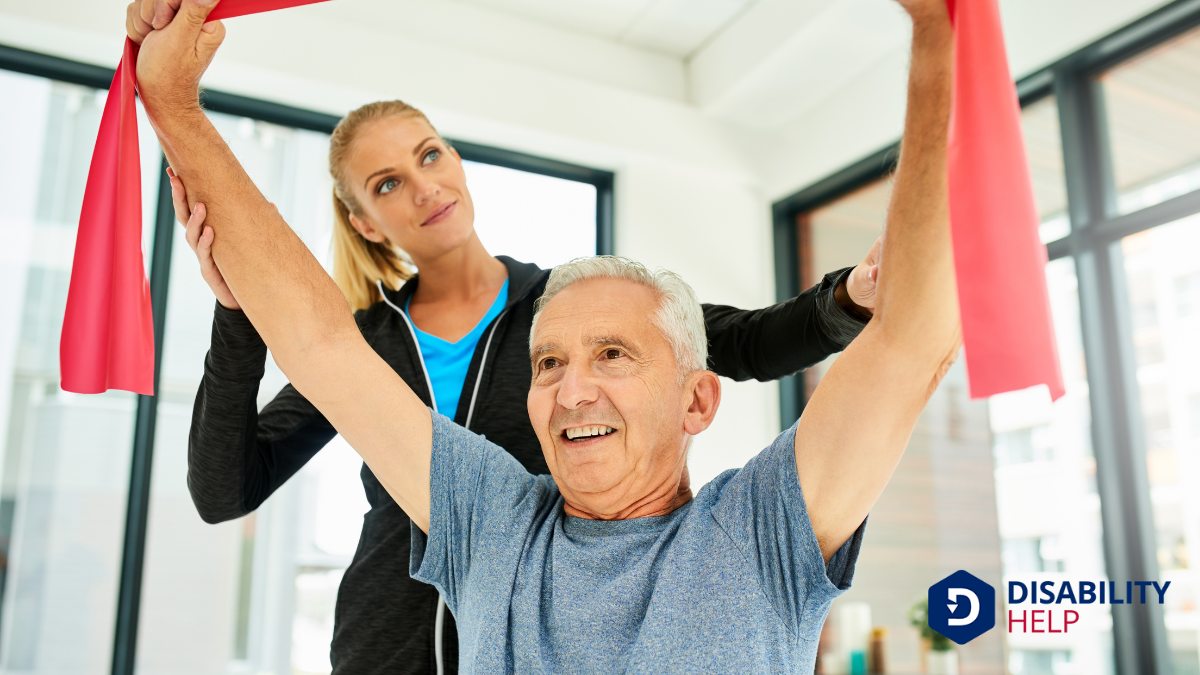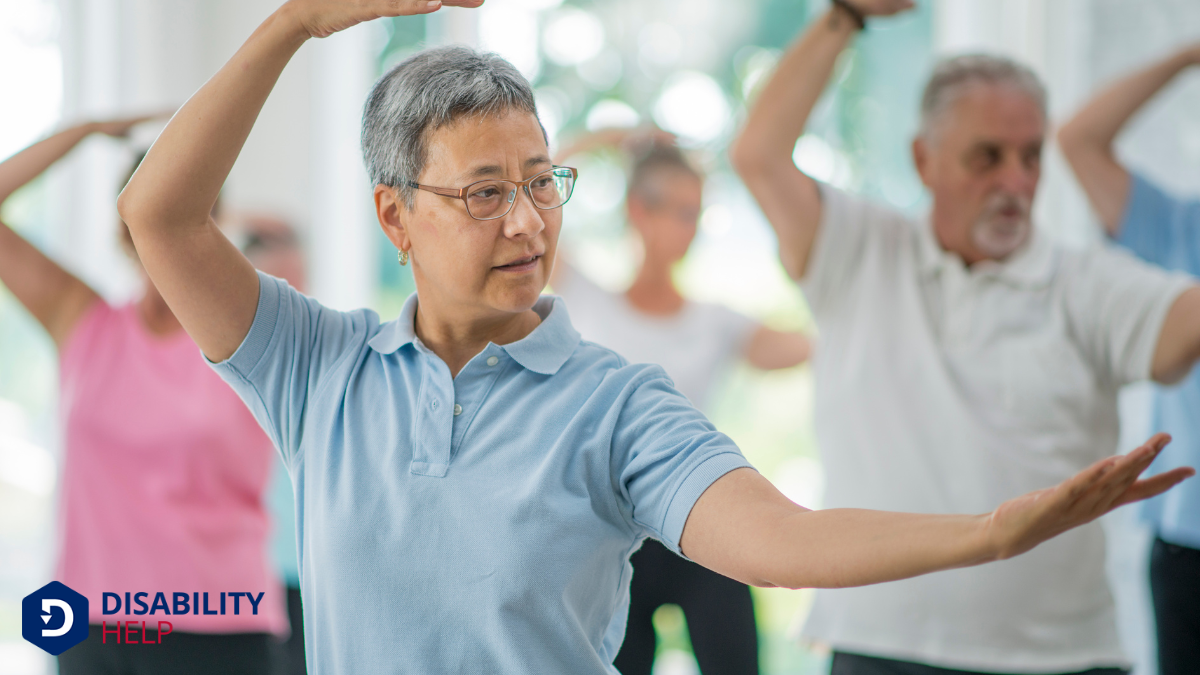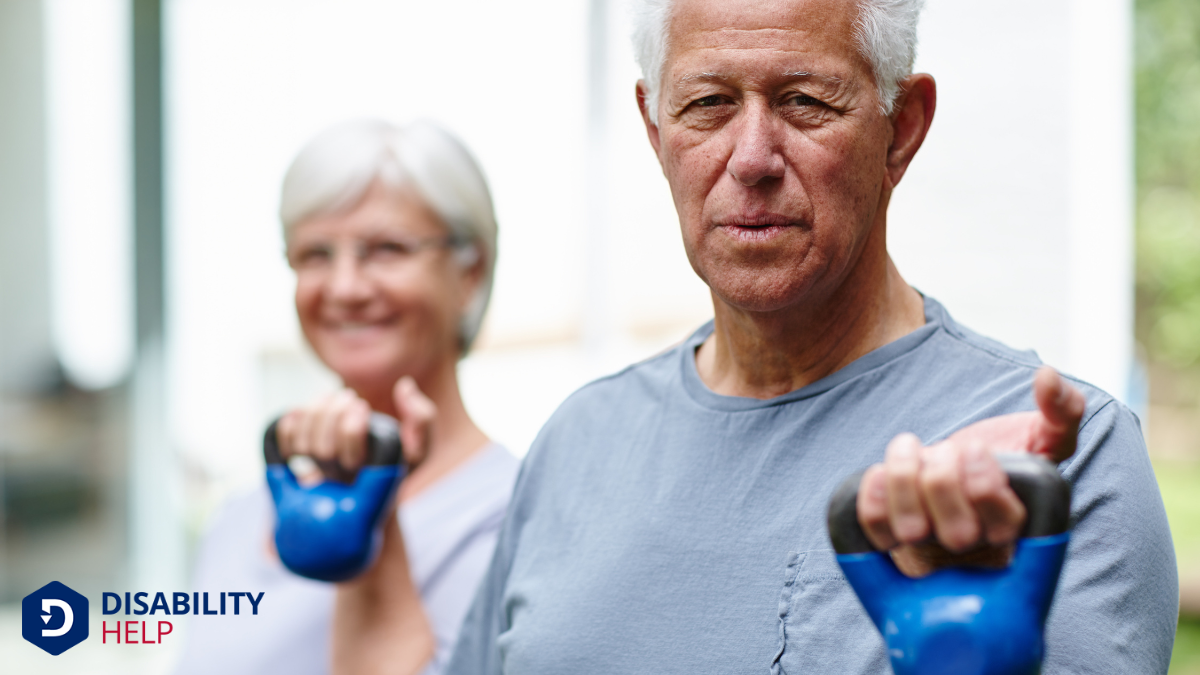When we think about mobility, it’s important to take into account exercises that enhance flexibility, strength, and balance. Yoga, Pilates, and Tai Chi each offer unique benefits for improving functional movement. While yoga helps with gentle stretching, Pilates focuses on core stability, and Tai Chi promotes mindful movement. Additionally, dynamic stretching and strength training play vital roles. So, how do we integrate these practices into our routines for best mobility?
Key Takeaways
- Yoga enhances range of motion through gentle stretching and improves balance, contributing significantly to overall mobility.
- Pilates focuses on core strength and stability, which supports posture and enhances movement efficiency.
- Tai Chi improves balance and flexibility with slow, deliberate movements, promoting better body awareness.
- Dynamic stretching prepares muscles for activity, increases joint flexibility, and reduces injury risk.
- Strength training stabilizes joints and enhances flexibility, providing structural support and injury prevention.
Understanding Mobility and Its Importance
Mobility is more than just moving from point A to point B; it’s about maintaining the freedom to perform everyday activities with ease and confidence.
When we talk about mobility, we're really discussing our body's ability to move efficiently and effectively. It involves flexibility, strength, and coordination, allowing us to interact with our environment without unnecessary strain or injury.
Understanding mobility helps us identify areas that might need improvement. Each of us experiences mobility differently, depending on factors like age, lifestyle, and health conditions.
Benefits of Exercise for Improved Mobility

When we commit to regular exercise, we can greatly enhance our joint flexibility, making daily movements smoother and less painful.
By building muscle strength, we're not only supporting our joints but also improving our overall stability.
Additionally, exercise helps us boost our balance and coordination, reducing the risk of falls and making us more agile in our everyday lives.
Joint Flexibility Enhancement
Although we often focus on strength and endurance, enhancing joint flexibility is equally essential for improved mobility. Flexible joints allow us to move more freely, reducing the risk of injury and increasing our range of motion.
When our joints are supple, everyday activities become easier, and we can participate in a wider variety of exercises without discomfort.
To improve joint flexibility, we should incorporate stretching routines and activities like yoga or tai chi into our fitness regimen. These exercises not only stretch our muscles but also promote joint health by encouraging synovial fluid production, which lubricates and cushions joints.
Regular practice can help us maintain our flexibility as we age, ensuring we stay active and independent. Let’s prioritize joint flexibility for a more mobile life!
Muscle Strength Development
Building muscle strength is essential for enhancing our mobility.
When we strengthen our muscles, we create a solid foundation that supports our joints and allows us to move more freely and efficiently.
Strong muscles act like shock absorbers, reducing stress on our joints during everyday activities.
This support helps prevent injuries and makes tasks like walking, climbing stairs, or lifting objects much easier.
Balance and Coordination Boost
As we fortify our muscles, we also need to focus on enhancing balance and coordination to truly improve mobility.
These elements are essential for preventing falls and maintaining independence.
Balance exercises, like standingThe legal right to bring a lawsuit, which requires that the individual bringing the suit has a direc... on one leg or using a balance board, challenge our stability.
Tai Chi and yoga also offer excellent ways to improve coordination while calming the mind.
Yoga: Enhancing Flexibility and Balance
Yoga stands out as a powerful practice for enhancing both flexibility and balance, offering benefits that extend beyond the mat.
When we engage in yoga, we’re not just stretching; we’re building a foundation for improved mobility and a more balanced life.
By incorporating a regular yoga practice, we can enjoy:
- Increased Range of Motion: Yoga poses gently stretch muscles, allowing us to move more freely and with less discomfort.
- Improved Balance: As we challenge our bodies with various poses, our stability improves, reducing the risk of falls.
- Mind-Body Connection: Yoga encourages mindfulness, helping us become more aware of our body's movements and limitations.
Let's embrace yoga to enhance our flexibility and balance, making it a valuable part of our mobility routine.
Pilates: Core Strength and Postural Alignment
While yoga enhances our flexibility and balance, Pilates takes our mobility journey further by focusing on core strength and postural alignment.
By engaging our core muscles, we improve stability, which is essential for maintaining good posture and preventing injuries. During Pilates, we perform controlled movements that target the deep muscles of our abdomen, back, and hips, helping us support our spine effectively.
We’ll find that as our core becomes stronger, our overall mobility will improve.
With better postural alignment, our bodies move more efficiently and effortlessly. Pilates encourages us to concentrate on form and breath, ensuring each movement is deliberate and precise.
This mindfulness not only boosts our physical health but also enhances our connection between body and mind, enriching our mobility practice.
Tai Chi: Mindful Movement and Stability

Let's explore how Tai Chi can enhance our balance and coordination while gently improving flexibility.
This ancient practice focuses on slow, deliberate movements that help us develop stability and control over our bodies.
Balance and Coordination Enhancement
Although often overshadowed by more intense workout routines, Tai Chi offers a unique approach to improving balance and coordination through its slow, deliberate movements.
By practicing Tai Chi, we engage in a mindful form of exercise that enhances our stability and focus. The benefits of Tai Chi extend beyond physical health, reaching into mental wellness and improved mobility.
- Enhanced Stability: We learn to maintain our balance by shifting weight gently from one foot to the other, which strengthens our core and leg muscles.
- Mindful Movement: Each movement requires concentration, helping us develop better body awareness and coordination.
- Stress Reduction: The meditative aspect of Tai Chi calms our minds, reducing stress and helping us move with more purpose.
Let's embrace Tai Chi and experience these benefits firsthand.
Gentle Flexibility Improvement
When we practice Tai Chi, we gently improve our flexibility through its mindful movements and focus on stability. This ancient practice allows us to engage our bodies in slow, deliberate motions, enhancing our range of motion without straining our muscles.
Each movement flows into the next, promoting a graceful balance that encourages our joints to move more freely. By prioritizing form and breath, we cultivate awareness, reducing tension and enhancing our overall mobility.
As we perform Tai Chi, we’re not just stretching our bodies—we’re also strengthening our minds. It teaches us to be present and attentive, which aids in preventing injuries and encourages a deeper connection with ourselves.
Let’s embrace Tai Chi as a pathway to better flexibility and mindful living.
Swimming: Low-Impact Full-Body Workout
Swimming offers a fantastic low-impact full-body workout that enhances both mobility and flexibility. As we glide through the water, we enjoy a unique exercise that supports our joints while strengthening muscles. This makes swimming especially beneficial for those of us dealing with mobility issues or recovering from injuries.
Consider the benefits:
- Joint-Friendly: Water's buoyancy reduces stress on our joints, making it perfect for arthritisInflammation of the joints, leading to pain, stiffness, and limited movement. patients.
- Muscle Engagement: Every stroke involves multiple muscle groups, promoting overall strength and endurance.
- Improved Flexibility: The stretching and reaching required in swimming naturally increase our range of motion.
Let's embrace swimming to improve our mobility. Its calming rhythm and supportive environment not only boost our physical health but also provide mental relaxation.
It's a holistic approach to enhancing mobility.
Dynamic Stretching: Pre-Exercise Mobility
Before diving into any workout, dynamic stretching primes our bodies for movement and enhances mobility. It’s not just about flexibility; it’s about preparing our muscles and joints for the activities ahead. By incorporating controlled, active movements through a full range of motion, we can reduce injury risk and improve performance.
Let’s think about leg swings, arm circles, or walking lunges. These movements increase blood flow and elevate muscle temperature, making us more ready for the physical demands of exercise.
Unlike static stretching, which we might do post-workout, dynamic stretching keeps us moving, ensuring our bodies are alert and engaged.
When we make this a regular part of our warm-up routine, we’re setting ourselves up for success, ensuring every workout starts on the right foot.
Strength Training: Building Supportive Muscles

Although often overlooked in mobility discussions, strength training plays an essential role in building supportive muscles that stabilize our joints and enhance overall movement.
By focusing on specific muscle groups, we can improve our mobility and prevent injuries. Let's explore how strength training can benefit us:
- Joint Stability: Strengthening muscles around our joints helps maintain balance and reduces the risk of strains or sprains.
- Enhanced Flexibility: Strong muscles support our bodies during stretches, allowing for greater range of motion.
- Injury Prevention: By building supportive muscle structures, we create a protective armor against potential injuries.
Incorporating strength training into our routine doesn't just build muscle—it empowers us to move more freely and confidently.
Incorporating Mobility Exercises Into Daily Life
Let’s make mobility a part of our daily routine by integrating simple stretches and functional movement drills that fit seamlessly into our schedules.
We can start with a few basic stretches each morning to wake up our muscles and improve flexibility.
Simple Daily Stretches
Incorporating simple daily stretches into our routine can greatly enhance our mobility and overall well-being.
These stretches don’t require much time or space and can be easily done at home.
Let’s explore a few stretches that can make a big difference:
- Neck Tilt: Gently tilt our head towards each shoulder, holding for a few seconds on each side. This relieves tension built up from daily activities.
- Cat-Cow Stretch: On all fours, alternate arching and rounding our back. This promotes spinal flexibility and eases back discomfort.
- Hamstring Stretch: While sitting, extend one leg forward and reach for our toes. This helps in loosening tight hamstrings that can limit movement.
Functional Movement Drills
While simple stretches are a fantastic start, integrating functional movement drills into our daily routine can elevate our mobility to a new level.
These drills mimic everyday activities, helping us move more efficiently and reducing the risk of injury. By performing movements like lunges, squats, and arm circles, we engage multiple muscle groups, improving both strength and flexibility.
Let’s not forget to incorporate balance exercises, like standing on one leg or practicing yoga poses.
These drills not only enhance our stability but also boost our body awareness. As we weave these functional movements into our day, we’ll notice improved posture, easier motion, and increased endurance.
Let’s embrace these drills to make our daily activities smoother and more enjoyable.
Consistent Practice Tips
Building on the benefits of functional movement drills, we can assure these exercises become a lasting part of our routine through consistent practice.
Let's start by integrating mobility exercises into our daily lives without feeling overwhelmed. We can begin by setting small, achievable goals and gradually increasing our commitment. Consistency doesn't mean spending hours each day; instead, it’s about finding opportunities throughout our routine.
- We can incorporate short mobility sessions during TV commercials or while waiting for coffee to brew.
- We can use reminders or alarms to prompt us to stand up and stretch every hour.
- We can pair mobility exercises with another habit, like brushing our teeth, to guarantee regular practice.
Tips for Creating a Personalized Mobility Routine
Crafting a personalized mobility routine can truly transform the way we move and feel. To start, we should assess our current mobility levels by noting any stiffness or pain points.
It's crucial to set clear, achievable goals that address these areas. Let's choose exercises that cater to our specific needs, such as dynamic stretches for flexibility or strength-building moves for stability.
Consistency is key; integrating these exercises into our daily routine guarantees progress. We should also listen to our bodies, adjusting the intensity or variety as needed.
Tracking our improvements can motivate us and highlight areas needing more focus. Finally, consulting a professional for guidance can fine-tune our routine, ensuring it remains safe and effective as we advance.
Conclusion
Incorporating mobility exercises into our daily routines can greatly enhance our overall movement and quality of life. By blending yoga, Pilates, and Tai Chi, we're not only building flexibility, strength, and balance, but also improving our body awareness. Let's not forget the benefits of dynamic stretching and strength training, which support our joints and muscles. By creating a personalized routine, we’re setting ourselves up for success in maintaining functional movement and staying active as we age.






